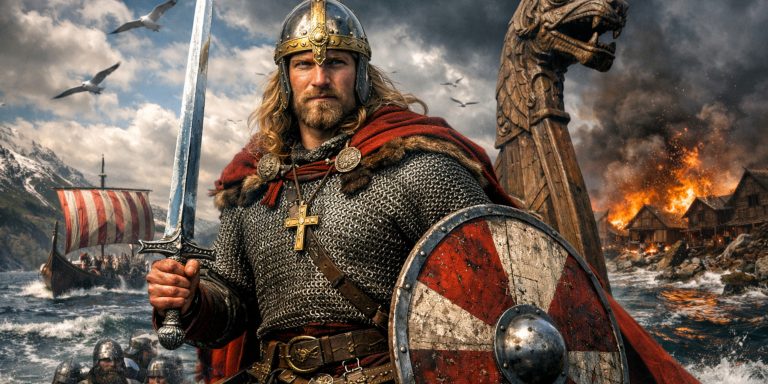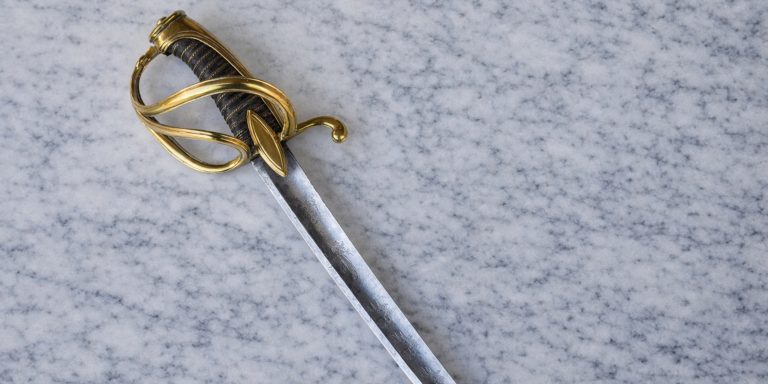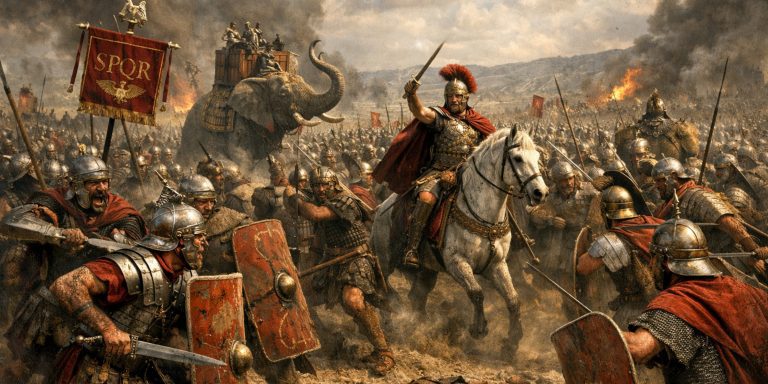
The Battle of Waterloo marked the end of the Napoleonic Wars and the final attempt by Napoleon Bonaparte to assert his rule over Europe. Fought near the town of Waterloo, in what is now Belgium, the battle saw the French Imperial Army clash with the Seventh Coalition, principally the Anglo-allied army under the Duke of Wellington and the Prussian forces commanded by Gebhard Leberecht von Blücher.
Napoleon’s hopes of a swift victory before other Coalition forces could converge were shattered, leading to his abdication and exile to Saint Helena. The battle altered the political landscape of Europe and signalled the end of French dominance.
Forces
The armies at Waterloo were vast and diverse. Wellington’s forces included British regulars, Dutch-Belgians, Hanoverians, and troops from Brunswick and Nassau. The Prussians were largely battle-hardened veterans. Napoleon’s forces were experienced, but many were newly conscripted or recalled from prior service.
| Army | Estimated Strength | Composition |
|---|---|---|
| French Empire | 73,000 | Infantry, cavalry, artillery |
| Anglo-Allied | 68,000 | British, Dutch, Belgian, German |
| Prussia | 50,000 (engaged) | Infantry, cavalry, artillery |
Leaders and Troop Composition
French Empire
- Commander-in-Chief: Napoleon Bonaparte
- Key Subordinates: Marshal Michel Ney, Marshal Emmanuel de Grouchy
Troop Composition:
- Infantry: Line and light regiments, Young and Middle Guard
- Cavalry: Cuirassiers, lancers, dragoons, chasseurs
- Artillery: Grand Battery and divisional batteries
Anglo-Allied Army
- Commander-in-Chief: Arthur Wellesley, Duke of Wellington
- Key Subordinates: Lord Uxbridge (cavalry), Prince of Orange, General Picton
Troop Composition:
- Infantry: British line regiments, Dutch-Belgians, KGL
- Cavalry: Household Brigade, Union Brigade, King’s German Legion
- Artillery: Royal Horse Artillery and field batteries
Prussian Army
- Commander-in-Chief: Field Marshal Gebhard von Blücher
- Key Subordinate: General August von Gneisenau
Troop Composition:
- Infantry: Regulars and Landwehr
- Cavalry: Hussars, dragoons, cuirassiers
- Artillery: Field guns and supporting batteries
Arms and Armour
French Forces:
- Muskets: Charleville musket (model 1777)
- Swords: Briquet sabres for infantry, heavy cavalry sabres for cuirassiers
- Uniforms: Blue coats with coloured facings by regiment; cuirassiers wore breastplates and helmets
- Artillery: 12-pounder cannons, howitzers, and the Gribeauval system
Anglo-Allied Forces:
- Muskets: Brown Bess flintlock musket
- Bayonets: Socket bayonets standard issue
- Cavalry Arms: Sabres, lances, carbines
- Armour: Limited to cavalry helmets and officers’ gorgets
- Artillery: 9-pounder cannons and Congreve rockets
Prussian Forces:
- Muskets: Potsdam musket and converted French models
- Cavalry Weapons: Sabres and pistols
- Uniforms: Black or blue with regional distinctions
- Artillery: 6 and 12-pounder field guns
Timeline of the Battle

| Time | Event |
|---|---|
| 11:30 am | French open fire; infantry attack Hougoumont |
| 1:00 pm | D’Erlon’s corps attacks Allied centre; repulsed by British infantry |
| 3:00 pm | Marshal Ney leads cavalry charges without infantry support |
| 4:30 pm | Prussian advance begins to pressure Napoleon’s right flank |
| 6:00 pm | French capture La Haye Sainte; pressure mounts on Allied centre |
| 7:30 pm | Imperial Guard advances; repulsed by British infantry fire |
| 8:30 pm | Full French retreat; Wellington and Blücher meet at Belle Alliance |
Archaeology
Waterloo has been the subject of extensive archaeological work, particularly in the 21st century. Surveys have revealed musket balls, uniform buttons, weapon fragments, and personal effects. Notably:
- Excavations at Mont-Saint-Jean uncovered remains of soldiers and horses, as well as medical tools, shedding light on field hospitals.
- Musket balls found in varying calibres illustrate the multinational nature of the conflict.
- Soil analysis confirms the use of Congreve rockets by Allied forces.
Ongoing work continues to challenge assumptions about troop positions and casualty disposal.
Contemporary Quotes
Napoleon Bonaparte:
“The Guard dies but does not surrender.” (Attributed, though likely apocryphal)
Duke of Wellington:
“It has been a damned serious business… the nearest run thing you ever saw in your life.”
Blücher (on meeting Wellington after the battle):
“Mein lieber Kamerad, vous êtes un grand homme.” (My dear comrade, you are a great man)
Legacy
The Battle of Waterloo ended over two decades of conflict and confirmed Britain’s role as a European power. It ushered in the Concert of Europe and marked a rare coalition success against a skilled military leader. Napoleon’s exile was final, and the political order of the continent was redrawn at the Congress of Vienna.
Waterloo remains a defining moment in military history, studied for its tactics, leadership, and the scale of its human cost.
Watch the documentary:



